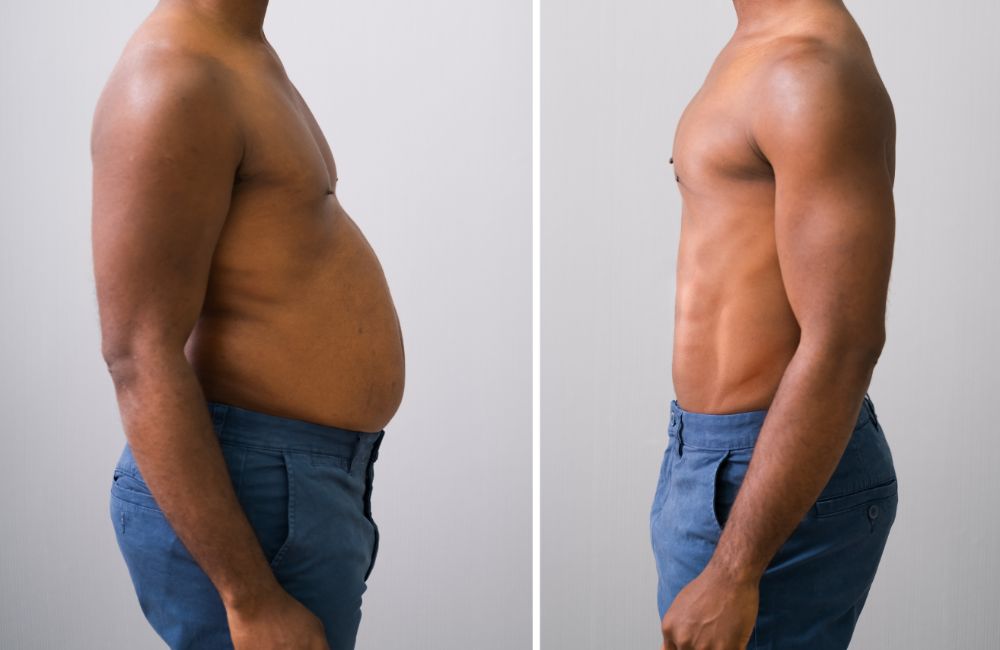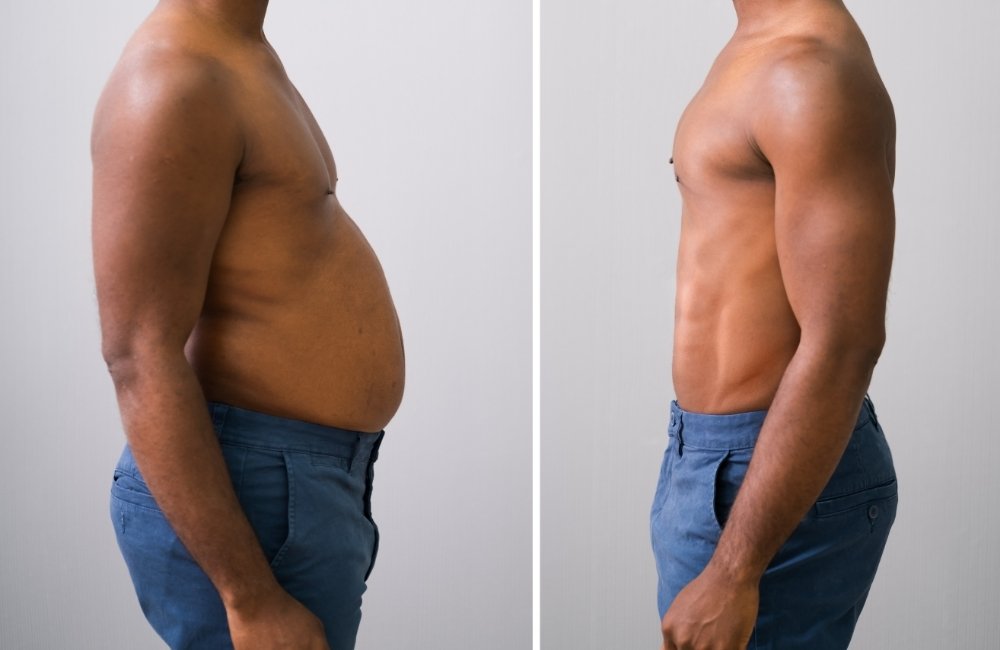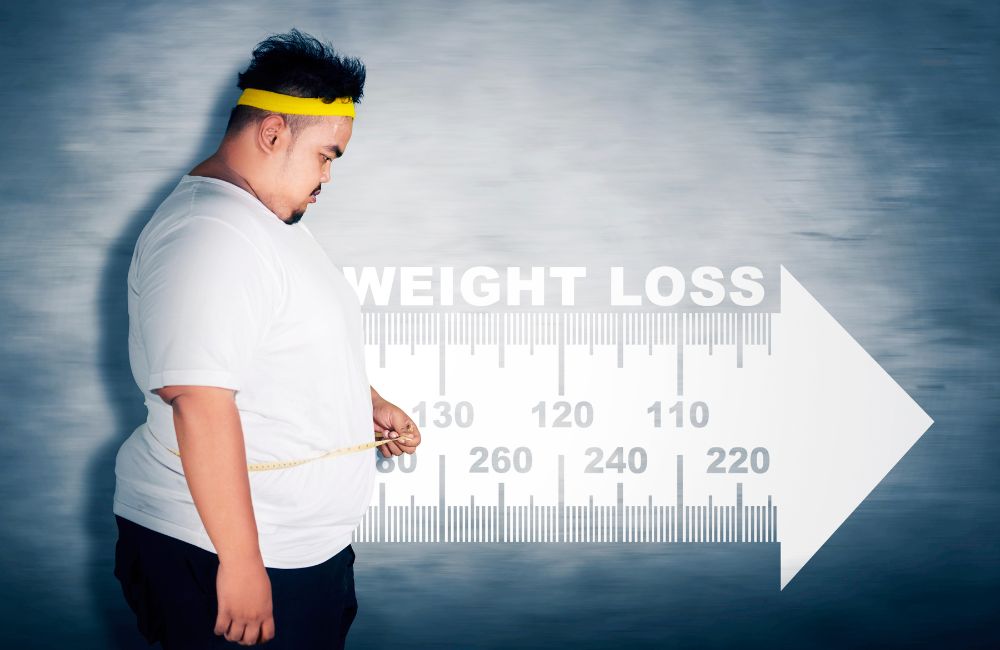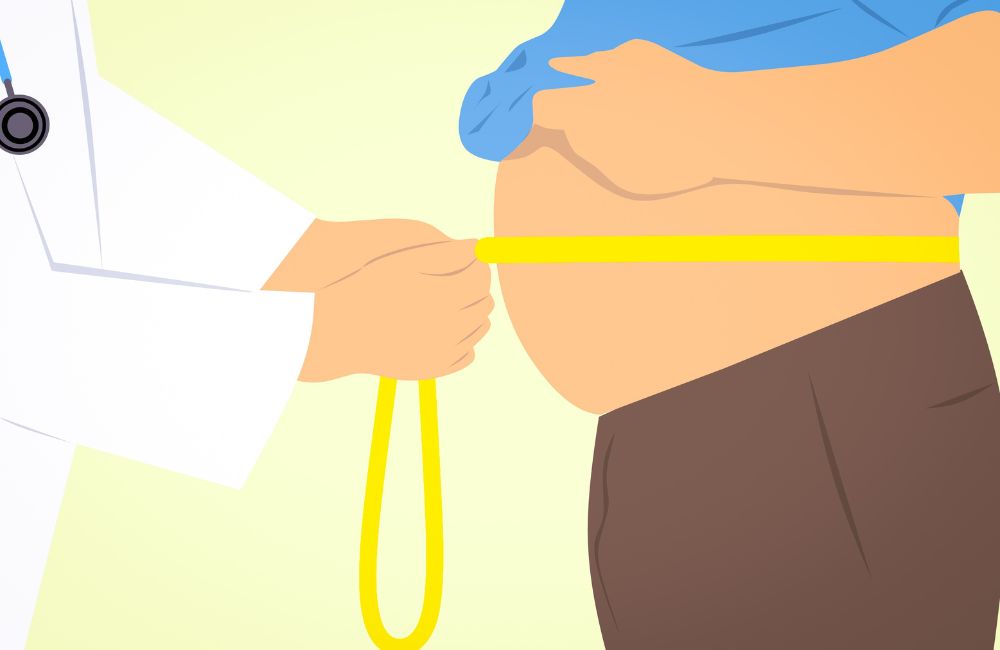
5 simple tips on how to lose 50 pounds as quickly as possible!
The more weight we want to lose, the more daunting it can feel to get started. Most often the first thing we lose is our motivation.
Although it can be tempting to hop on the fad diet train just to jumpstart things, that’s likely what got you here in the first place.
To succeed with weight loss, you need a reason to start. You need to connect to your motivators. Why do you want this? What will your life look like if you met your goals?
Above all else, you need to be realistic with what you want and how long it might take you to get there.
This will help you weed out poor habits that might set you back, such as choosing a very low-calorie diet or vowing to cut out all carbs forever.
How Long Will It Take to Lose 50 Pounds?

Weight loss is a tricky thing. As much as we want to be able to break it down into a simple math equation, our bodies just don’t work that way.
When you first begin to incorporate lifestyle changes into your diet and exercise habits, weight loss can show up as anything between 0-2lbs per week depending on several different factors.
The amount of weight you lose and how fast you lose it will be unique to you.
You may see some diets that claim to help you lose a set amount of weight within a certain time. For example, “lose 20 pounds in one week.” It’s incredibly enticing but unfortunately, there is no way to ensure you will lose that much weight in that time.
The same goes for calories. Although we know we need a calorie deficit to lose weight, not all calories are created equal. A calorie deficit alone cannot promise you the results you are looking for.
If you have a significant amount of weight to lose, forget what you’ve read on magazine covers or seen on TikTok, and consider some of the habits below.
Also, check out:
- 5-Day Mediterranean Diet Plan to Lose Weight
- How to Lose 10 Pounds In a Month: 10 Simple Steps, Backed by Science
How to Lose 50 Pounds Fast: 5 Simple Steps
1. Make Simple Swaps
To lose weight, you must make changes in your diet. There’s no way around it. This is the most crucial step in a weight loss journey and the one many people get wrong. Instead of trying to micromanage what you eat or break it down into a complex math problem, focus on adding in more good foods.
It may seem simple, but the less pressure you put on yourself to eat perfectly, the easier it is to make small changes here and there. And let me tell you, small changes can add up to significant ones over time.
Most of us know what we should and should not be eating. It’s encouraged to choose more whole, unprocessed foods, such as fruits, vegetables, nuts, seeds, legumes, whole grains, low-fat dairy, and lean meats.
Processed foods should be limited to moderation, this includes anything that has been significantly changed from its original form, such as potato chips, soda, cookies, crackers, French fries, fried foods, baked goods, etc.
Look at your diet as it is currently. What can you swap out for something else that still appeals to you? For example, maybe you enjoy a breakfast sandwich of 2 pieces of white toast with an egg and some cheese in the morning.
Instead, try swapping the white bread out for a while grain with more fiber. Instead of consuming 2-3 regular sodas daily, swap for sugar-free or cut down to just one. Use these swaps in your meals and snacks where you see fit.
It’s more sustainable because it’s less restrictive. The best diet is one that does not feel like much of a diet.
2. Cut out Added Sugars
There are different types of sugars. Natural sugars can be found in fruits, starchy vegetables, dairy, and grains. Processed sugars are often added to baked goods, candy, and at this point, most packaged items.
Even foods marketed as healthy can contain a shocking number of added sugars.
According to the Center for Disease Control and Prevention (CDC), Americans are consuming way too much added sugar.
This can cause conditions such as obesity, type 2 diabetes, and heart disease. Cutting down on added sugar intake can not only help you drop the weight quickly, but it’s also better for your health overall.
The American Heart Association (AHA) recommends limiting added sugars to no more than 24 grams per day for women and 36 grams per day for men (1, 2).
Added sugars can be hidden under various names on a product’s ingredients list. Common names you may see aside from sugar include sucrose, dextrose, syrups, honey, and sugars from concentrated fruit juice.
If you want to know how much sugar is in the product you are choosing, look at the Nutrition Facts panel on the back of the product. There you can find a section for added sugars that will provide the number of grams per serving.
3. Manage your Hunger
A lot of people believe dieting is synonymous with a constant state of hunger when in fact, it should be about keeping your hunger in check. If you’ve dieted in the past and felt hungry all the time, you probably weren’t eating enough.
The best way to work on controlling your hunger is to pay attention to how often you eat. The longer you go between periods of eating, the more difficult it will feel to keep your portions in check.
This may mean eating more frequently throughout the day. Eating more does not automatically mean you will gain weight. In fact, chronically under-eating can negatively impact your ability to get the weight off.
If three meals a day don’t keep you satisfied, try adding a snack between meals. You can also choose 5-6 smaller, more frequent meals.
Another great way to help manage your hunger is to pay attention to the foods you are eating. Some foods are more filling than others and we can use these to our advantage. Below are some filling foods to consider with your meals and snacks. If you are missing one of these items, you may want to adjust to avoid getting too hungry.
- Protein – meat, seafood, soy, low-fat dairy (cheese, milk, yogurt, cottage cheese)
- Healthy Fats – avocado, salmon, tuna, olive oil, olives, nuts, seeds
- Fiber – fruits, vegetables, whole grains, beans, legumes
4. Try Out Strength Training
Although cardio exercises can help us burn big calories, they can also rev up our appetite. Strength training exercises increase our muscle mass and can lead to an increased calorie burn throughout the day. The more muscle you have the better your metabolism functions.
For the most efficient weight loss, combine cardio and strength training exercises in your weekly routine. According to the CDC, Americans should aim for 150 minutes a week of cardiovascular exercises. This includes walking, jogging, biking, swimming, and more.
This could be broken down into about 30 minutes of light to moderate intensity exercise per day. It’s also recommended to incorporate at least 2 days of strength training exercises per week.
These should target all the major muscle groups, such as your back, abs, legs, hips, chest, shoulders, and arms (3).
5. Lose the Guilt
When we commit to making a change, it’s easy to get frustrated when we don’t stick with it. Guilt is a big reason why many people don’t reach their goals. One bad day can be enough to throw you off your path and back into an old routine.
Next time this happens, remind yourself that one bad meal, one bad day, or even one bad week, will not make or break all your weight loss progress so far. Being successful is about being consistent most of the time. It’s not realistic to be perfect all the time.
Bottom Line
If you have up to 50 pounds of weight to lose, your first step should be finding your ‘why’. Next, commit to making small changes to your diet and exercise routine.
Lastly, lose the guilt and remember that it’s not a perfect science, but a process that has ups and downs. If you fall, get right back on the horse, and start again.
Next thing you know, those 50 pounds will be gone, and you will be left with healthy habits to last a lifetime.


